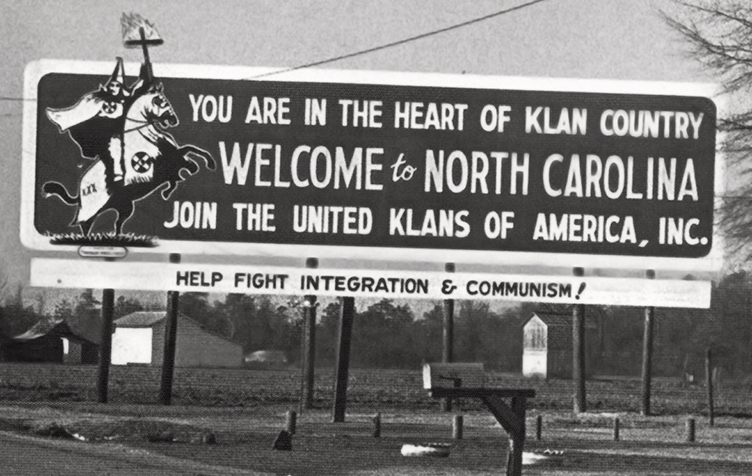Eastern North Carolina contained the largest concentration of Klan members: three times as many per capita as the Piedmont, and more than six times as many per capita as the Mountains.
Economic instability was widespread in rural Eastern North Carolina. Pitt County’s male unemployment rate in 1960 was twice as high as the average rate in the Piedmont. New industrial jobs were showing up in the area, but some white men believed that Civil Rights reforms would result in these jobs being taken by black workers. Such economic fears fueled the Klan’s rapid expansion in Eastern North Carolina.
In 1964, the Klan held rallies in Eastern North Carolina every Saturday night. The rallies included food, live music, and hate-filled speeches. They culminated after dark with the burning of a giant cross. By 1965 the Klan was holding nightly rallies in the region. They often preceded these with daytime street walks—marches through the main thoroughfare of the closest town. The Klan also erected billboards along highways in Eastern North Carolina with slogans such as “You are in the heart of Klan country.” And they regularly burned crosses in the yards of people they saw as enemies.
The Klan’s public presence in North Carolina had largely dissipated by the 1970s. Yet, negative effects linger in areas where the Klan flourished, such as Eastern North Carolina. As sociologist David Cunningham spells out, these areas continue to experience higher-than-average rates of violent crime in part because of the ways that the Klan had “disrupted community cohesion, undermined generalized trust, and challenged the perceived legitimacy of local authority.”
Artistic expressions—like the work of Freeman Vines—can ignite dialogue, helping us to expose a dark past to the light and move beyond these lingering legacies of violence.



